Installing eG Java BTM on JBoss EAP
The steps for deploying the eG Java BTM on a JBoss EAP server will differ based on the following:
- The platform on which the target JBoss EAP server is running - whether on a Windows platform or a Unix platform ;
- The operational mode of the monitored JBoss EAP server - whether stand-alone or Domain mode;
BTM-Enabling a JBoss EAP Server Monitored in an Agent-based Manner
If the JBoss EAP server is running on a Windows operating system and is operating in the Stand-alone mode, then follow the steps below to BTM-enable that server:
- Login to the JBoss EAP server.
- Open a browser on the server, connect to the eG manager, and login to the eG admin interface.
- Manage the JBoss EAP server as a separate component using the eG administrative interface. When managing, make sure the Agentless flag is unchecked to indicate that the server is being monitored in an agent-based manner.
-
Next, follow the Agents -> BTM Profiler Download menu sequence in the eG admin interface. Figure 1 will then appear, listing the Java application servers managed in the environment. Locate the JBoss EAP server that you managed recently in that list, and click the Copy JVM icon (
 ) corresponding to it (see Figure 1).
) corresponding to it (see Figure 1).
Figure 1 : Identifying the JBoss AS/EAP server running on a Windows system and operating in a Stand-alone mode, which is to be BTM-enabled
-
Figure 2 will then appear. Copy the JVM option displayed in Figure 2 to the clip board or any text editor.
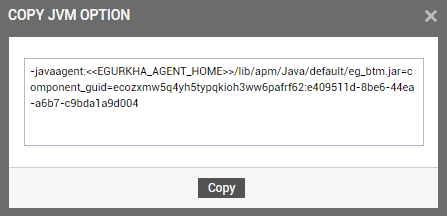
Figure 2 : Copying the JVM option for BTM-enabling a JBoss AS/EAP server running on a Windows system and operating in the stand-alone mode
-
Next, edit the standalone.conf.bat file on the JBoss/EAP server being monitored.
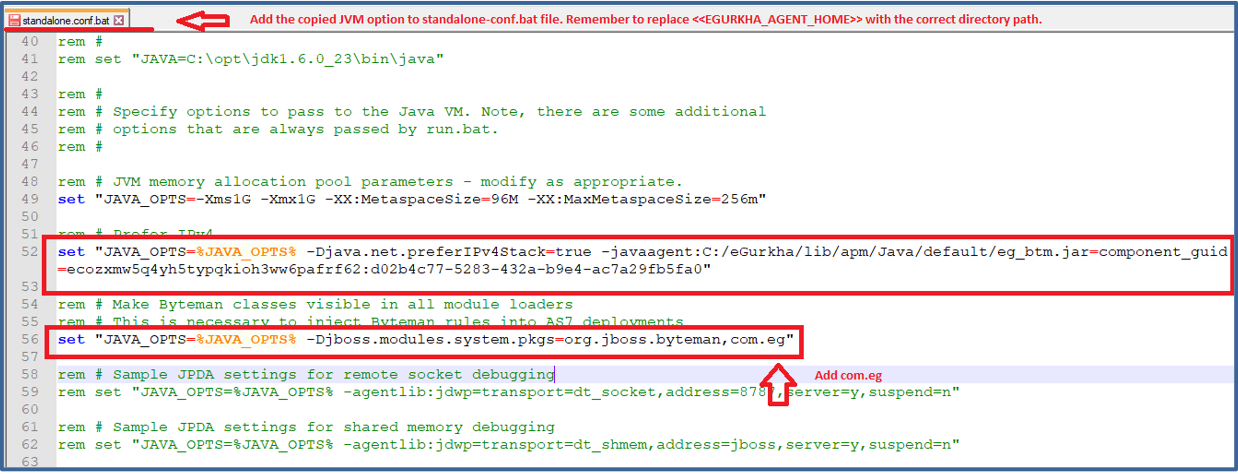
Figure 3 : Editing the standalone.conf.bat file of the target JBoss AS/EAP server running in the stand-alone mode on a Windows system
- Append the code block you copied at step 6 above to the JAVA_OPTS specification that pre-exists in the standalone.conf.bat file, as indicated by Figure 3 above. When doing so, make sure you replace the <<EGURKHA_AGENT_HOME>> tag in the entry with the actual install directory of the eG agent deployed on the JBoss server.
-
Also, add com.eg as one of the system packages as shown below (see Figure 3).
set "JAVA_OPTS=%JAVA_OPTS% -Djboss.modules.system.pkgs="org.jboss.byteman,com.eg"
- Finally, save the file.
- Restart the server.
If the JBoss EAP server is running on a Linux operating system and is operating in the Stand-alone mode, then follow the steps below to BTM-enable that server:
- Login to the JBoss EAP server.
- Open a browser on the server, connect to the eG manager, and login to the eG admin interface.
- Manage the JBoss EAP server as a separate component using the eG administrative interface. When managing, make sure the Agentless flag is unchecked to indicate that the server is being monitored in an agent-based manner.
-
Next, follow the Agents -> BTM Profiler Download menu sequence in the eG admin interface. Figure 4 will then appear, listing the Java application servers managed in the environment. Locate the JBoss EAP server that you managed recently in that list, and click the Copy JVM icon (
 ) corresponding to it (see Figure 4).
) corresponding to it (see Figure 4).
Figure 4 : Identifying the JBoss AS/EAP server running on a Linux system and operating in a Stand-alone mode, which is to be BTM-enabled
-
Figure 2 will then appear. Copy the JVM option displayed in Figure 2 to the clip board or any text editor.
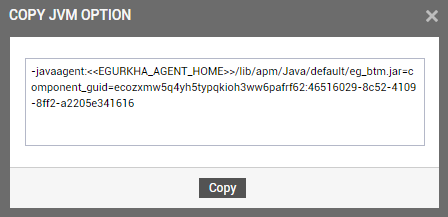
Figure 5 : Copying the JVM option for BTM-enabling a JBoss AS/EAP server running on a Linux system and operating in the stand-alone mode
-
Next, edit the standalone.conf file on the JBoss/EAP server being monitored.
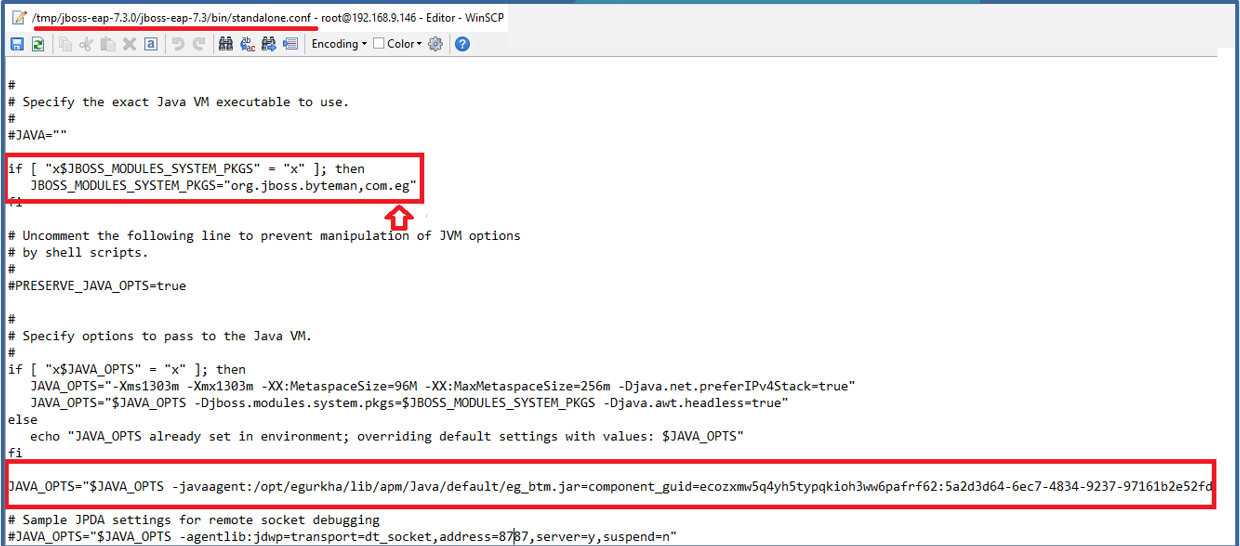
Figure 6 : Editing the standalone.conf file of the target JBoss AS/EAP server running in the stand-alone mode on a Linux system
- Append the code block you copied at step 6 above to the JAVA_OPTS specification that pre-exists in the standalone.conf file, as indicated by Figure 3 above. When doing so, make sure you replace the <<EGURKHA_AGENT_HOME>> tag in the entry with the actual install directory of the eG agent deployed on the JBoss server.
-
Also, add com.eg as one of the system packages. For this, append ",com.eg" to the values that pre-xist against the JBOSS_MODULES_SYSTEM_PKGS, as depicted by Figure 3.
-
Finally, save the file.
- Restart the server.
If the JBoss EAP server is running on a Windows system and is operating in the Domain mode, then follow the steps below to BTM-enable that server:
- Login to the JBoss EAP server.
- Open a browser on the server, connect to the eG manager, and login to the eG admin interface.
- Manage the JBoss EAP server as a separate component using the eG administrative interface. When managing, make sure the Agentless flag is unchecked to indicate that the server is being monitored in an agent-based manner.
-
Next, follow the Agents -> BTM Profiler Download menu sequence in the eG admin interface. Figure 7 will then appear, listing the Java application servers managed in the environment. Locate the JBoss EAP server that you managed recently in that list, and click the Copy JVM icon (
 ) corresponding to it (see Figure 7).
) corresponding to it (see Figure 7).
Figure 7 : Identifying the JBoss AS/EAP server running on a Windows system and operating in the Domain mode, which is to be BTM-enabled
-
Figure 2 will then appear. Copy the JVM option displayed in Figure 2 to the clip board or any text editor.
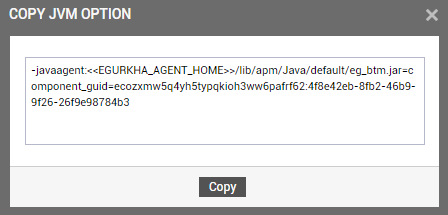
Figure 8 : Copying the JVM option for BTM-enabling a JBoss AS/EAP server running on a Windows system and operating in the domain mode
-
Next, edit the host.xml file on the JBoss/EAP server being monitored.
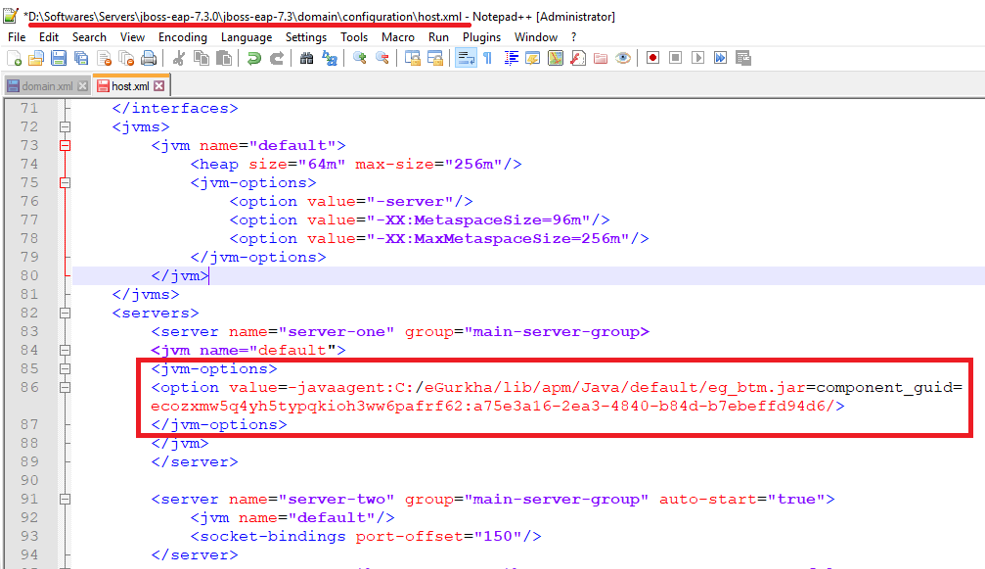
Figure 9 : Editing the host.xml file of the target JBoss AS/EAP server running in the domain mode on a Windows system
- Append the code block you copied at step 6 above to the <jvm-options> specification that pre-exists in the host.xml file, as indicated by Figure 3 above. When doing so, make sure you replace the <<EGURKHA_AGENT_HOME>> tag in the entry with the actual install directory of the eG agent deployed on the JBoss server.
- Then, save the file.
-
Next, edit the domain.xml file to add com.eg as one of the system packages (see Figure 10).
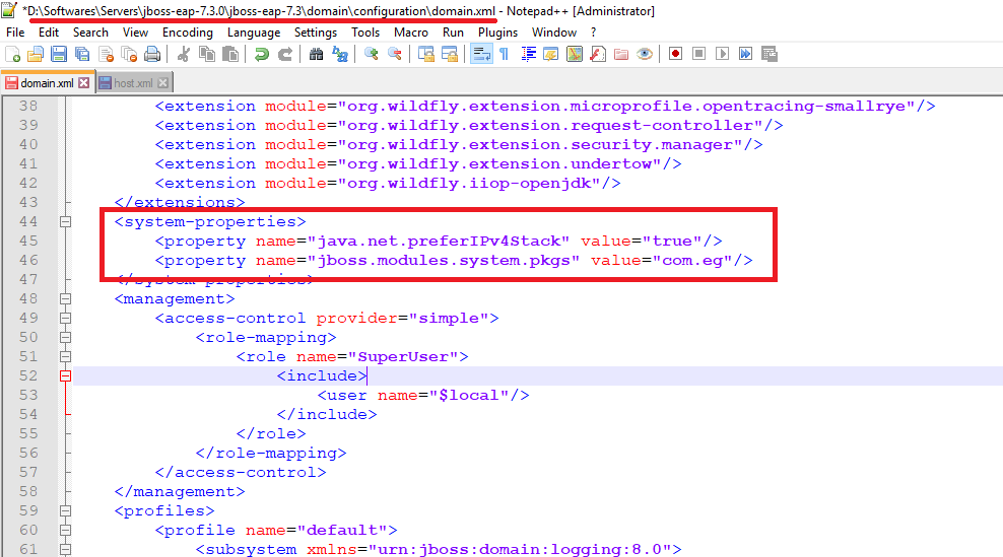
Figure 10 : Editing the domain.xml file of the JBoss server on Windows running in the Domain mode
- Finally, save the file, and restart the server.
If the JBoss EAP server is running on a Linux operating system and is operating in the Domain mode, then follow the steps below to BTM-enable that server:
- Login to the JBoss EAP server.
- Open a browser on the server, connect to the eG manager, and login to the eG admin interface.
- Manage the JBoss EAP server as a separate component using the eG administrative interface. When managing, make sure the Agentless flag is unchecked to indicate that the server is being monitored in an agent-based manner.
-
Next, follow the Agents -> BTM Profiler Download menu sequence in the eG admin interface. Figure 11 will then appear, listing the Java application servers managed in the environment. Locate the JBoss EAP server that you managed recently in that list, and click the Copy JVM icon (
 ) corresponding to it (see Figure 11).
) corresponding to it (see Figure 11).
Figure 11 : Identifying the JBoss AS/EAP server running on a Linux system and operating in the Domain mode, which is to be BTM-enabled
-
Figure 2 will then appear. Copy the JVM option displayed in Figure 2 to the clip board or any text editor.
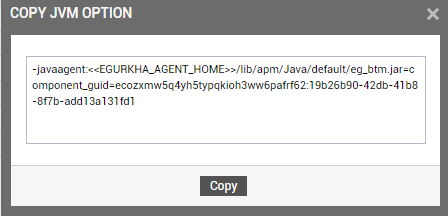
Figure 12 : Copying the JVM option for BTM-enabling a JBoss AS/EAP server running on a Linux system and operating in the Domain mode
-
Next, edit the host.xml file on the JBoss/EAP server being monitored.
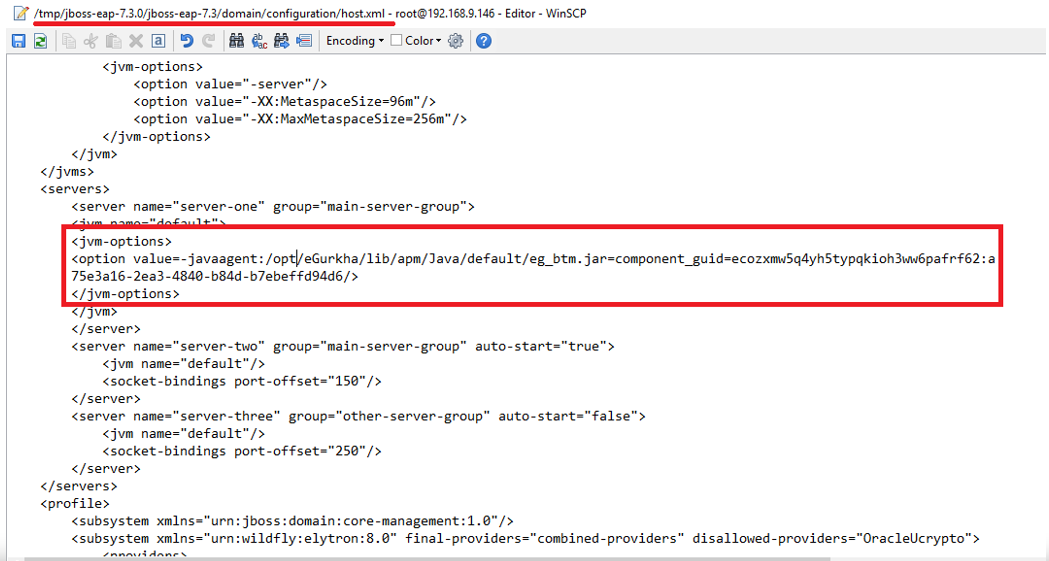
Figure 13 : Editing the host.xml file of the target JBoss AS/EAP server running in the Domain mode on a Linux system
-
Append the code block you copied at step 6 above to the <jvm-options> specification that pre-exists in the host.xml file, as indicated by Figure 3 above. When doing so, make sure you replace the <<EGURKHA_AGENT_HOME>> tag in the entry with the actual install directory of the eG agent deployed on the JBoss server.
- Then, save the file.
-
Next, edit the domain.xml file to add com.eg as one of the system packages (see Figure 14).
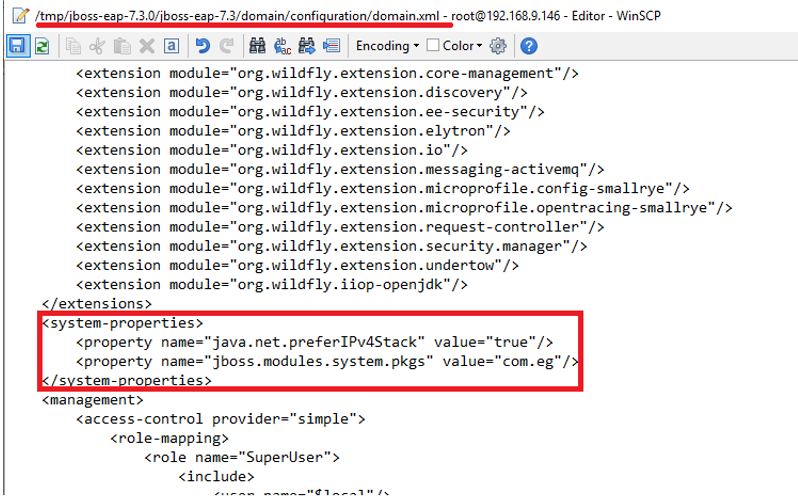
Figure 14 : Editing the domain.xml file of the JBoss server on Linux running in the Domain mode
- Finally, save the file, and restart the server.
Verifying Whether/Not the JBoss EAP Server Has Been Successfully BTM-Enabled
Once the –javaagent JVM option is added and server is restarted, do the following:
-
Check for the presence of “[eG BTM]” and “BTM is ENABLED” in application server’s standard output (see Figure 15). If text similar to the ones indicated by Figure 15 is found in the log file, it implies that the -javaagent entry is taken and BTM is successfully enabled.

Figure 15 : Verifying whether/not the JBoss EAP server is successfully BTM-enabled